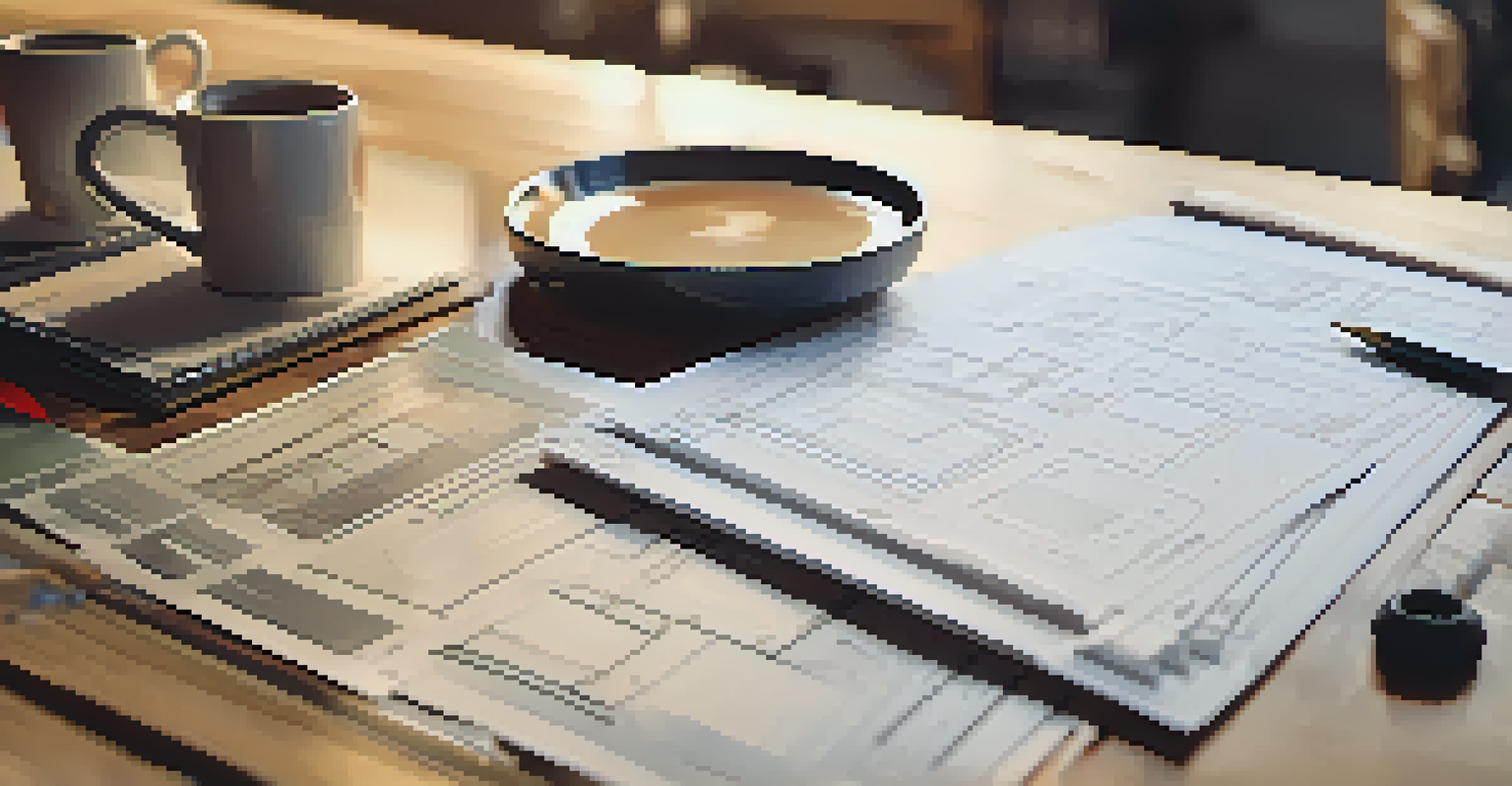What to Expect During a Contractor Home Visit Estimate

Understanding the Purpose of the Home Visit Estimate
When a contractor visits your home for an estimate, their main goal is to assess your project needs. This visit allows them to gather crucial details about your space, materials, and any specific requirements you may have. Think of it as the contractor’s first impression, much like a doctor examining a patient to diagnose an issue.
The best way to predict the future is to create it.
During this initial meeting, you can also share your vision for the project. Whether you want to remodel your kitchen or add a deck, communicating your ideas helps the contractor understand your expectations. This mutual exchange of information sets the foundation for a successful project.
Ultimately, the home visit is about building a relationship with your contractor. A good rapport can lead to better communication throughout the project, ensuring that you’re both on the same page as the work progresses.
Preparing for the Contractor’s Arrival
Before the contractor arrives, it's essential to prepare your space. Clear any clutter in the areas where work will be done, making it easier for the contractor to assess the situation. This preparation also shows your contractor that you’re serious about the project.

Consider making a list of questions or concerns you have about the project. This will not only help you stay organized but also ensure you get all the information you need during the visit. For example, you might want to ask about timelines, materials, or even payment options.
Purpose of Home Visit Estimates
The home visit allows contractors to assess your project needs and establish a mutual understanding of expectations.
Lastly, it’s a good idea to gather any relevant documents, such as previous plans, permits, or photographs. Having these materials on hand can help the contractor understand your vision and provide a more accurate estimate.
What Happens During the Walkthrough
During the home visit, the contractor will conduct a thorough walkthrough of your property. They will examine the areas you want to renovate or repair, taking notes on dimensions and existing conditions. This step is crucial for them to formulate an accurate estimate.
Before anything else, preparation is the key to success.
As they walk through your home, feel free to ask questions and share your ideas. This dialogue can provide valuable insights that the contractor may not have considered. Just like a chef tasting their dish as they cook, this back-and-forth can refine the project’s direction.
The contractor may also take photos or measurements to reference later. This information will help them create a detailed proposal, ensuring nothing is overlooked when they calculate costs and timelines.
Discussing Your Project Goals and Budget
A significant part of the home visit involves discussing your project goals and budget. Be open about what you want to achieve and the budget you have in mind. This transparency helps the contractor align their services with your expectations.
If you have a fixed budget, let the contractor know. They may offer alternatives or suggestions that can help you stay within your financial limits. Think of it as a friendly negotiation, where both parties are working towards a common goal.
Preparing for the Contractor Visit
Clearing clutter and preparing questions ensures a productive meeting with the contractor.
By discussing your project goals and budget upfront, you set clear parameters for the contractor. This clarity can prevent misunderstandings later on and help ensure you’re both aligned as the project moves forward.
Understanding the Timeline of the Project
During the estimate, the contractor will also discuss the project's timeline. They will consider various factors, such as the scope of work, availability of materials, and labor. Understanding the timeline can help you plan accordingly and manage your expectations.
It's important to ask about potential delays or obstacles that could arise. For instance, weather conditions can impact outdoor projects, while supply chain issues might affect material delivery. Being aware of these possibilities helps you stay informed.
Establishing a timeline during the estimate is crucial for both you and the contractor. It allows you to prepare for the project's start and gives the contractor a framework to work within, helping everyone stay on track.
Reviewing the Estimate and Proposal Details
After the walkthrough and discussions, the contractor will provide you with a detailed estimate and proposal. This document outlines the costs, materials, and timeline for your project. It’s your roadmap for what to expect moving forward.
Make sure to review the estimate carefully. Look for any details that may need clarification, such as labor costs, material choices, or potential extra charges. Just like reading the fine print in a contract, understanding the estimate ensures you’re fully informed.
Reviewing Estimates Thoroughly
Carefully reviewing the estimate helps avoid misunderstandings and ensures you are fully informed before proceeding.
If you have questions or concerns about any part of the proposal, don’t hesitate to ask the contractor. Open communication at this stage can prevent misunderstandings as the project progresses and help you feel more confident in your decisions.
Next Steps After the Estimate Visit
Once the estimate is in hand, you’ll need to decide how to proceed. Take your time to evaluate the proposal and consider your options. This is a significant investment, so it's worth ensuring you’re comfortable with the details before moving forward.
If you’re ready to proceed, inform the contractor of your decision. They may require a deposit to secure your place in their schedule, which is common in the industry. This step is akin to reserving a table at a restaurant—you’re ensuring your spot for the experience ahead.

If you have reservations or want to compare estimates from other contractors, that’s perfectly okay too. It’s wise to gather multiple perspectives before making a final choice, ensuring you select a contractor who aligns with your vision and budget.